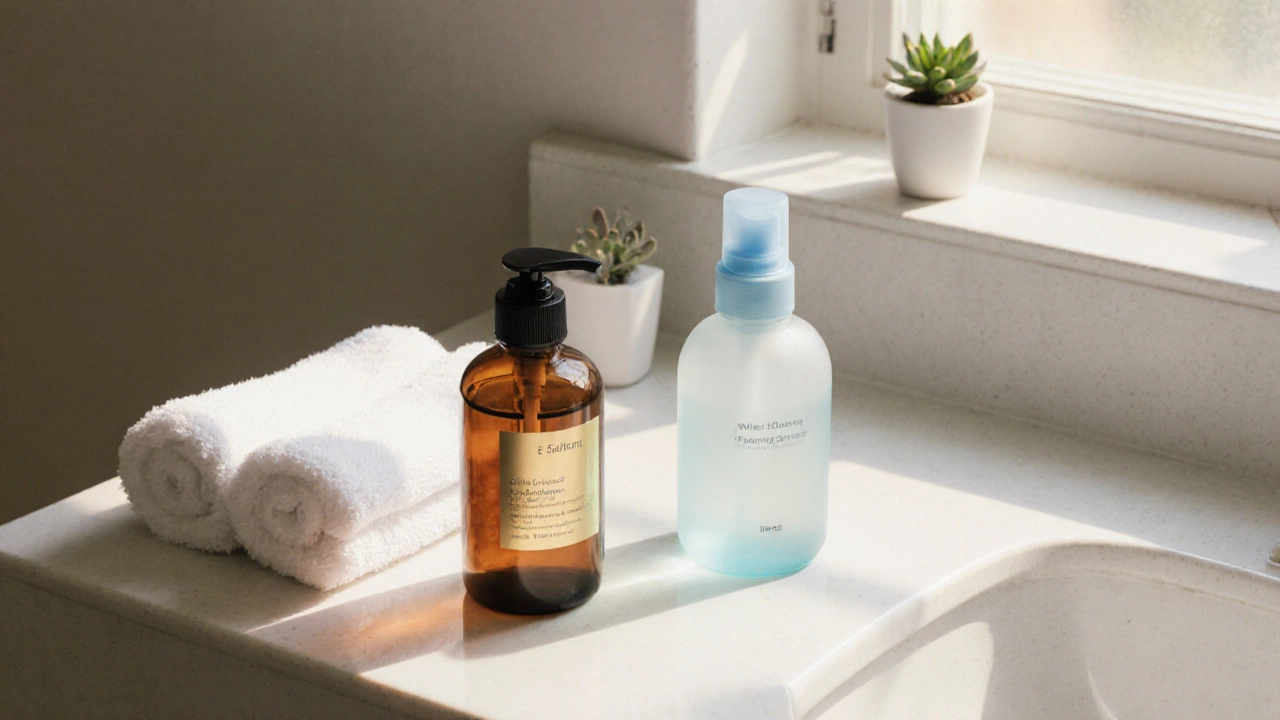Oil Cleanser – The Gentle Way to Remove Makeup and Impurities
When talking about oil cleanser, a cleansing product that uses oil to dissolve makeup, sunscreen and excess sebum without stripping the skin. Also known as oil‑based cleanser, it works by attracting oily residues and lifting them away. Skincare routine, the daily set of steps you follow to keep skin clean, hydrated and protected often starts with this step because it prepares the skin for the next cleanse. The practice of double cleansing, using an oil cleanser first and a water‑based cleanser second is a simple way to ensure every trace of impurity is gone, and it directly influences the health of the skin barrier.
Why Choose an Oil Cleanser?
Oil cleansers are especially good for breaking down stubborn makeup, waterproof mascara and heavy sunscreen. The oil molecules bind with the oily parts of these products, making them easier to rinse off. This means you’re less likely to need harsh rubbing, which can cause irritation. For people with dry or sensitive skin, an oil cleanser can actually *add* moisture because many formulas include nourishing oils like jojoba, squalane or rosehip. Those same nourishing oils also keep the skin’s natural lipid barrier intact, so you finish your cleanse feeling soft, not squeaky.
Another win is that oil cleansers tend to have a lower pH than many foaming cleansers, so they don’t disrupt the skin’s acid mantle. A stable acid mantle supports a balanced microbiome, which in turn helps keep breakouts at bay. In short, using an oil cleanser helps maintain skin health while efficiently removing unwanted stuff.
Choosing the right one comes down to a few key attributes. Look for a formula that lists a *single‑ingredient* oil (like olive or grapeseed) near the top of the list – that usually means the product relies on the oil itself rather than hidden surfactants. Also check for added antioxidants (vitamin E, green tea) because they protect the skin from free‑radical damage during the cleansing step. Finally, consider your skin type: if you have very oily T‑zone, a lighter oil or a silicone‑based cleanser can prevent that post‑cleanse shine.
How you use an oil cleanser matters just as much as the product you pick. Start with dry hands, massage a pea‑size amount onto dry skin for 30‑60 seconds, focusing on areas with heavy makeup. The massage itself stimulates circulation and gives you a mini facial. Then add a splash of water – the emulsion will turn milky – and continue massaging for another 15 seconds before rinsing thoroughly. If you’re following the double‑cleansing method, you’ll reach for a gentle water‑based cleanser next to wash away any remaining oil residue.
Common myths often discourage people from trying oil cleansers. One widespread belief is that oil will *clog pores* and cause acne. In reality, most non‑comedogenic oils are smaller than the pores they sit on, and they actually help dissolve the excess sebum that can lead to blockages. Another myth is that oil cleansers are only for dry skin – the truth is that even oily skins benefit from the balancing effect of a well‑formulated oil cleanser.
Integrating an oil cleanser into a broader facial oil, a leave‑on product designed to nourish and seal in moisture after cleansing can boost results. After your double cleanse, apply a few drops of facial oil to seal in hydration and give the skin a healthy glow. This combo creates a seamless loop: the oil cleanser removes grime without stripping, the second cleanser sweeps away residual oil, and the facial oil locks in moisture.
Below you’ll find a curated collection of articles that dive deeper into each of these points. From luxury brand recommendations and ingredient deep‑dives to step‑by‑step guides for beginners, the posts cover everything you need to master oil cleansing and fit it perfectly into your everyday routine.
Korean Face Wash Method Explained: Step‑by‑Step Guide
Learn the Korean face wash method, a two-step double cleanse that removes makeup, sunscreen and pollutants for clearer, brighter skin. Get step‑by‑step instructions, product tips, and FAQs.

 Hair Care
Hair Care